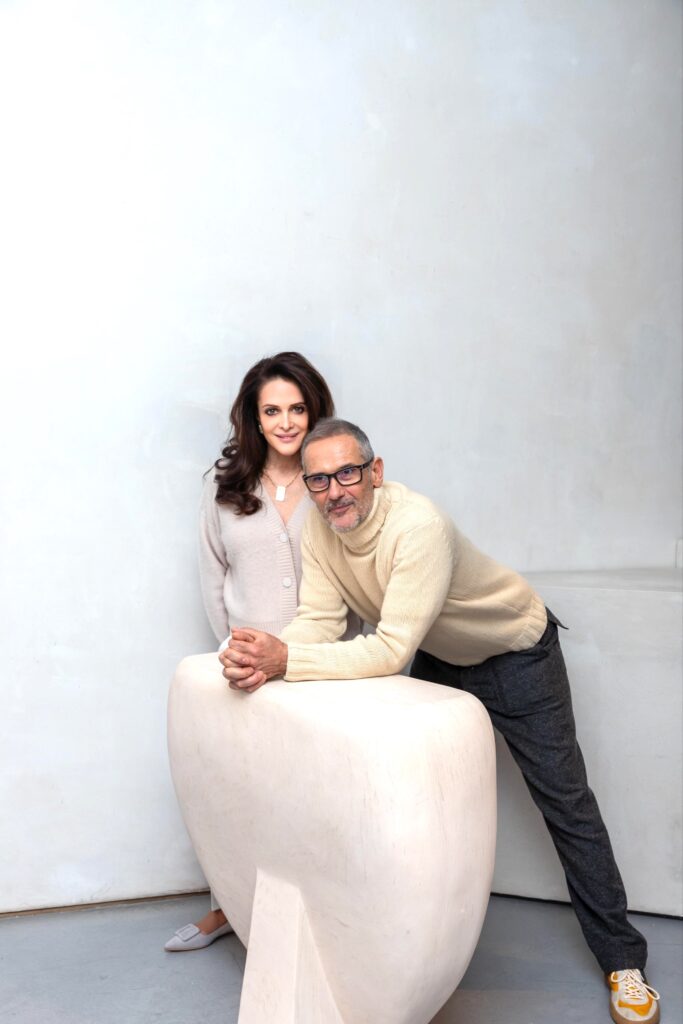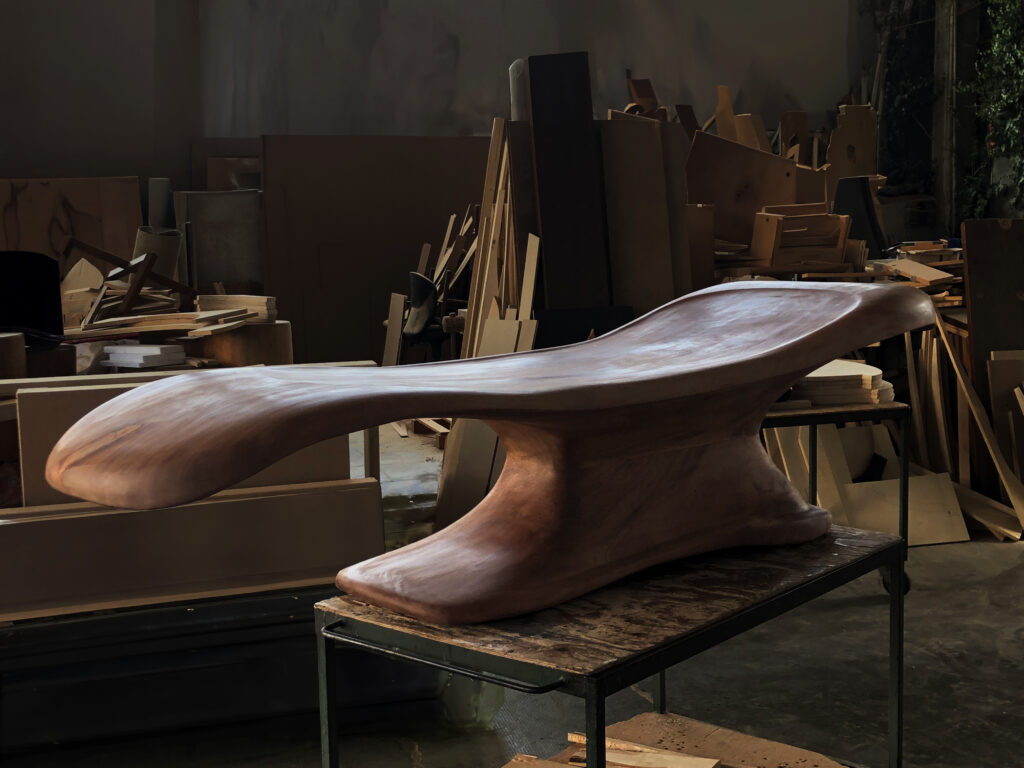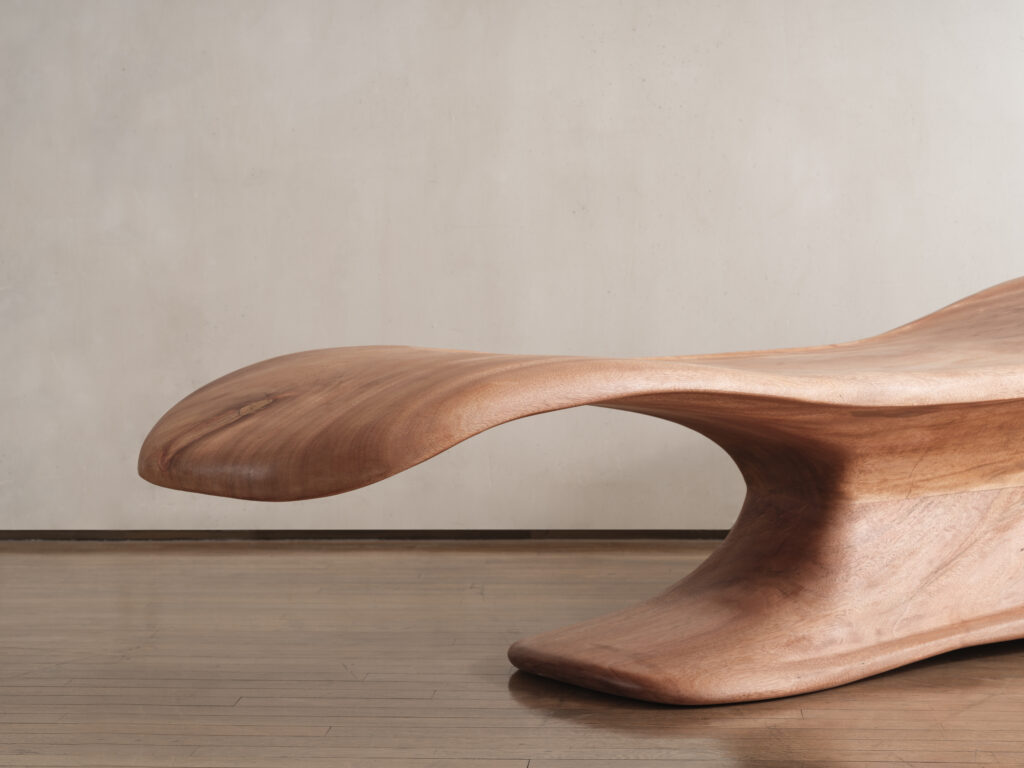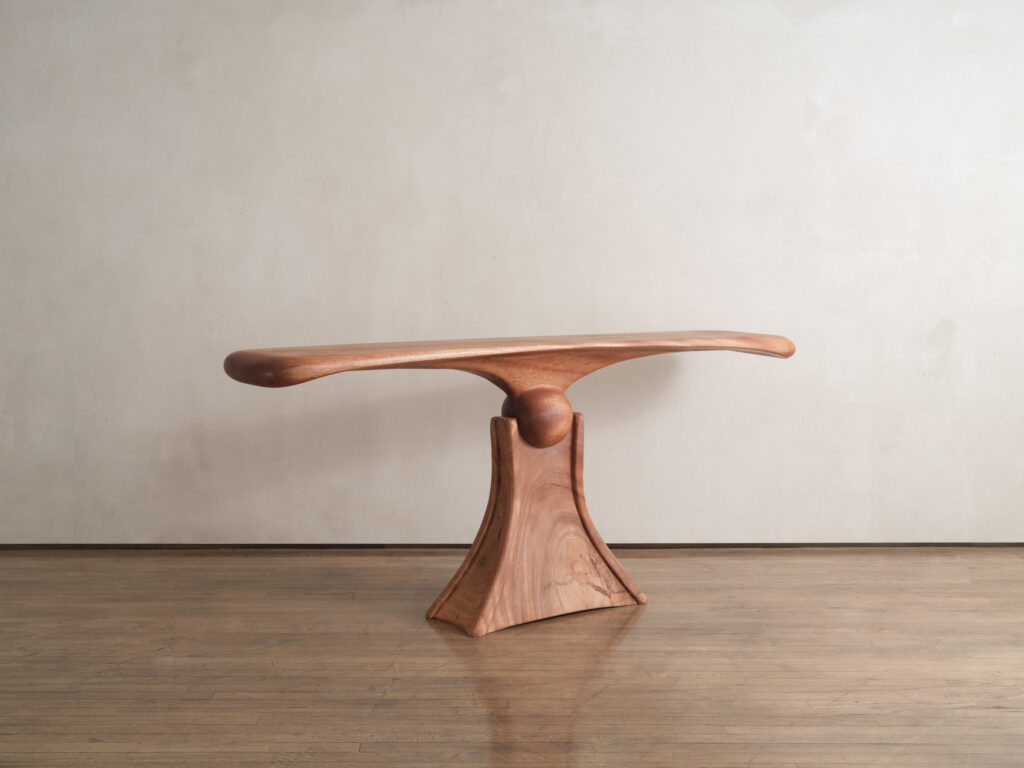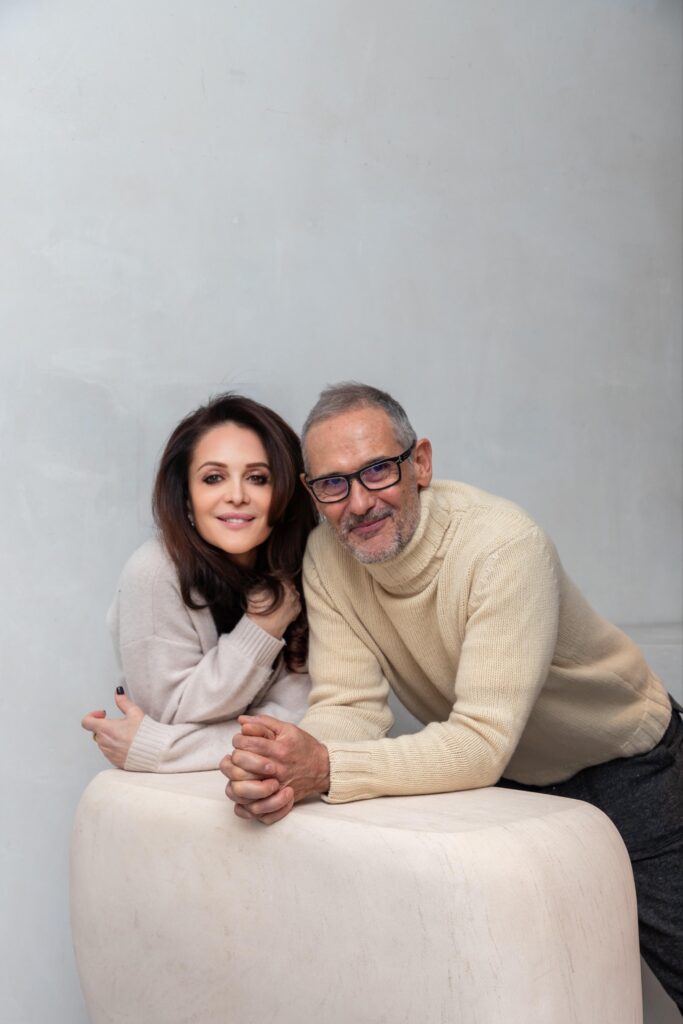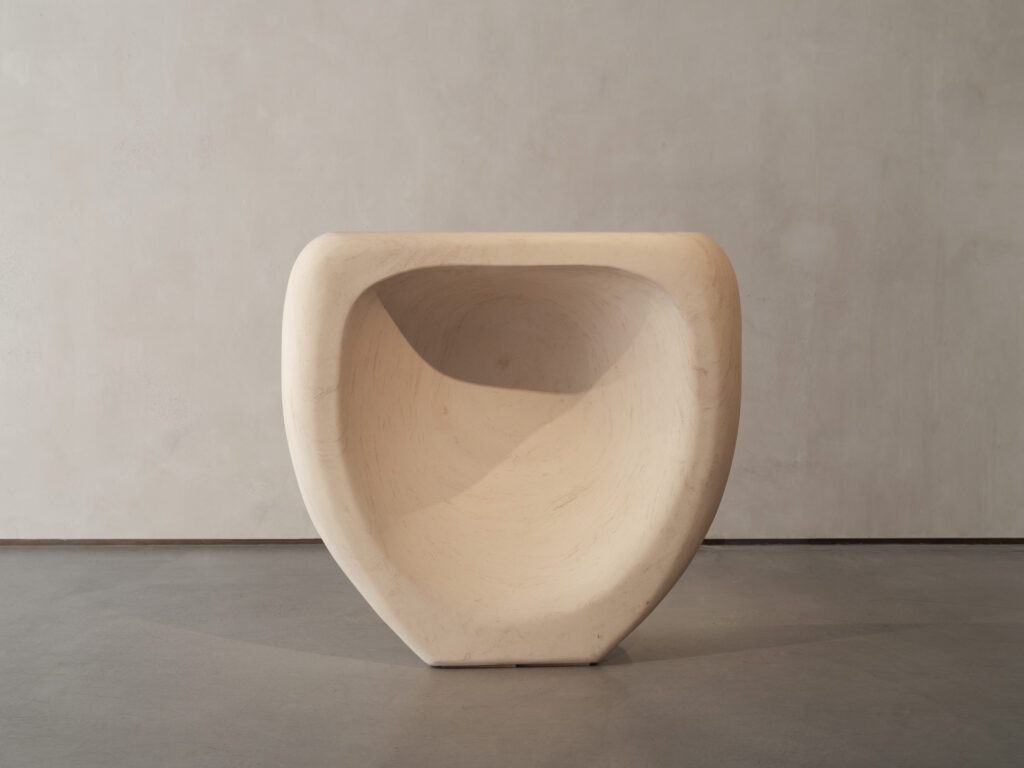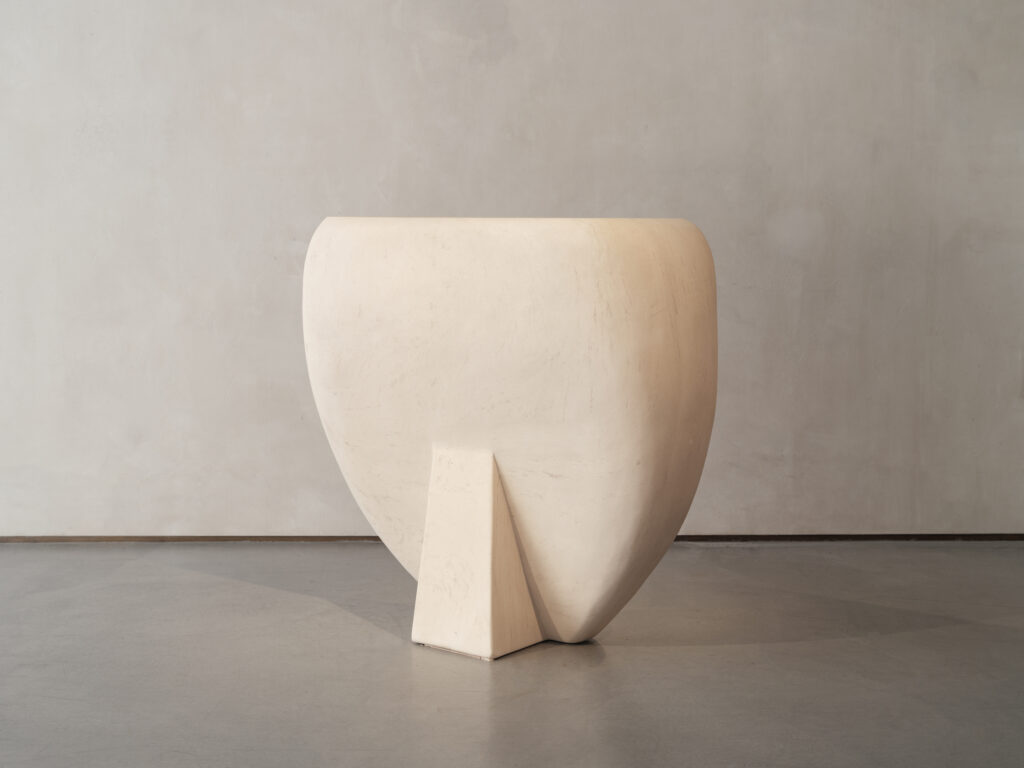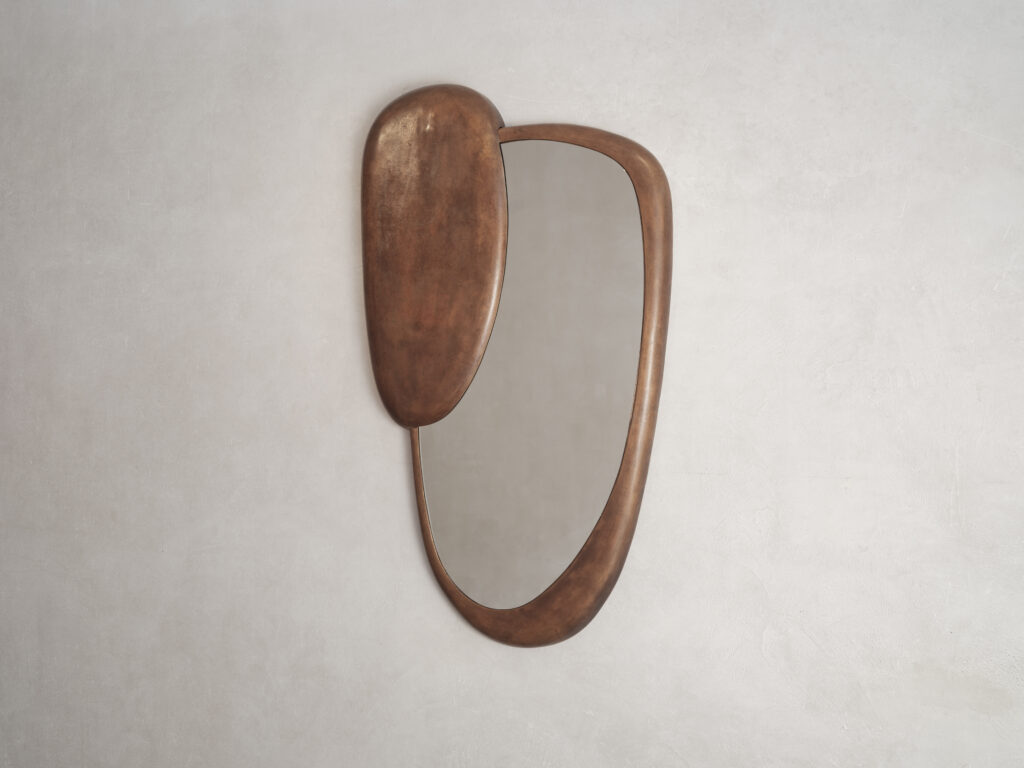
For Milan-based Italian artist Mauro Mori, every piece of furniture has a soul, a personality, and a spirit, with each piece ultimately reflecting its maker’s hands. The process of making Mori’s furniture is a long one, whether he is carving a wooden table in his small workshop on the island of Seychelles, or chiseling and hammering a console out of a block of limestone in the Tuscan town of Carrara. Every aspect of his work is made with his own hands. There are no machines, digital fabrication, or any advanced technology whatsoever. Machines, he believes, can’t achieve the spirit of the maker, and there is nothing more spiritual than the artist’s print. Think of the great Michelangelo who traveled to Carrara to choose the stone, and then sketched on a block of marble before beginning to chip away at it with chisels and hammers, revealing the shape and volume of the piece. This is Mori, old world and working only with the most traditional methods. Like Constantin Brâncuși—the Romanian patriarch of modern sculpture whom Mori refers to as his godfather—Mori’s sculptures exemplify symbols and symbolism.
Now that Ateliers Courbet is opening the anticipated solo exhibition of Mori’s new work, it is time to learn the oeuvre of one of the most authentic souls in the landscape of Italian design. He calls himself a craftsman and celebrates the organic nature of the materials he uses.
Although Mori worked with the Italian furniture company Capellini in the past, since opening his own atelier in 1998 he has devoted his efforts exclusively to making Art Furniture. He works with the materials in their places of origin while preserving the authentic character and personality of the materials. He chooses each block and takes time—sometimes years—to fully realize a new piece, with each carrying his unique spirit. Mori travels to Seychelles twice a year to select the wood for his piece. Working with Albizia Rosa Wood is the perfect fit, because this subtropical tree was introduced in the Seychelles around 1910 for reforestation and timber production but has since become invasive, thus cutting them down is desirable. After cutting the tree and starting to shape the piece, he sends the wood back to Milan where the remaining work will take place.
His pieces are organic and abstract, often with geometrical elements. The reduction is central to all of Mori’s forms because it allows the material to ‘speak.’ Craftsmanship is integral to each piece, and therefore he calls himself ‘Craftsman.’ I remember when visiting his studio in Milan, I was astonished by the wealth of materials and the way in which he experiments with them all. His pieces are sensual, and he loves to ask his audience to touch them, engage with them, and become a part of them. While he excels at shaping the materials, he also likes leaving them natural and organic. He has praised the collaboration with the gallery’s owner Melanie Courbet for the direction she brings to his work and for encouraging him to keep creating, to think outside of his own box, and to take his work to new horizons.
